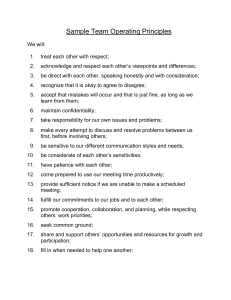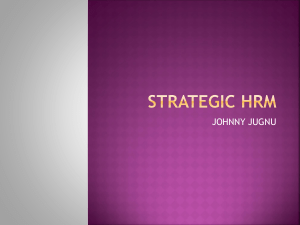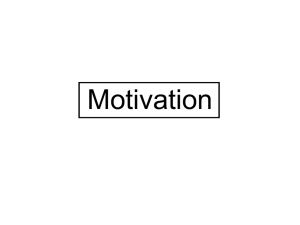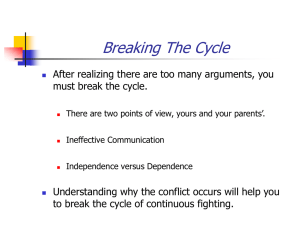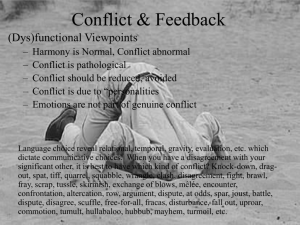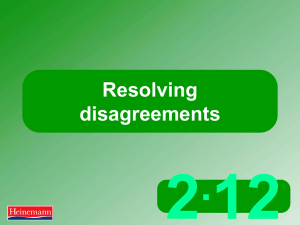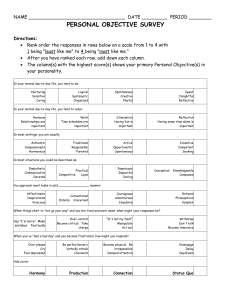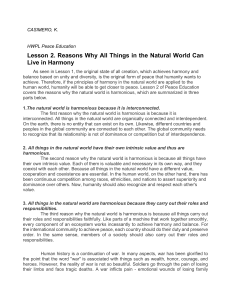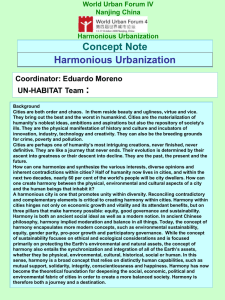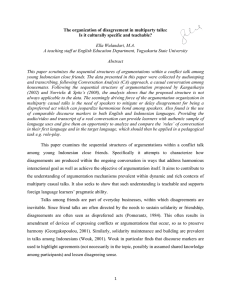Inclusion: Conflict
advertisement
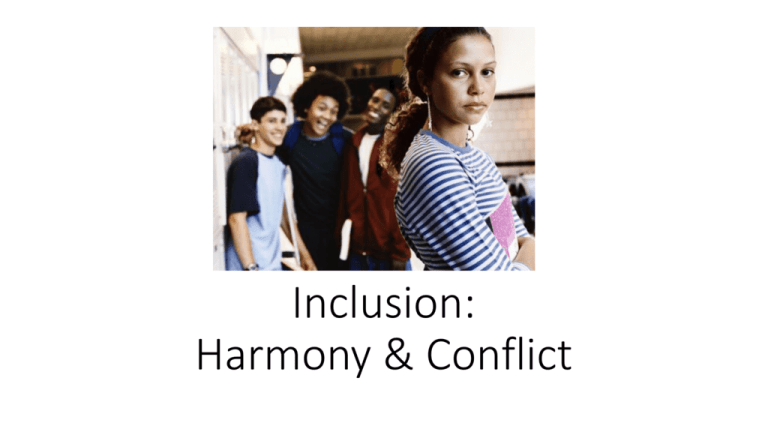
Inclusion: Harmony & Conflict Agenda Outcome: USC7.4 Demonstrate a personalized and coherent understanding of the importance of nurturing harmony in relationships (with self, others, and the environment), and apply effective strategies to re/establish harmony when conflict arises. • Express insights into what makes a relationship harmonious. • Create an informed personal definition of conflict. (Fishbowl?) • Analyze potential sources of conflict. • Examine how disagreements are not the same as conflicts. • Conclude that a certain degree of disagreement in relationships is normal. • Propose why some disagreements lead to conflict and some do not. • Examine feelings associated with conflict. • Analyze personal strategies for dealing with conflict (e.g., reduce/avoid barriers to communicating clearly and constructively). • Analyze the connections between self-esteem and personal conflict management strategies. • Assess the impact of conflict on the health (i.e., physical, mental, emotional, spiritual) of self and others. • Reduce/avoid barriers to communicating clearly and constructively. • Demonstrate and adapt strategies of conflict management in a range of contexts. • Examine what is meant by negotiation, mediation, anger management, compromise, consensus building, and other means of resolving/managing conflict. • Demonstrate the basics of two or three strategies for re-establishing harmony and for resolving/managing conflict. Express ideas of what makes a relationship harmonious. Create a skit or a talk show • Oprah • Dr. Phil • Jerry Springer • Mystery Date Create an personal definition of conflict. • How are disagreements not the same as conflicts? • Why do some disagreements lead to conflict and some do not? https://www.youtube.com/watch?v=KY5TWVz5ZDU Feelings Associated With Conflict • Does personal conflict strategies create self-esteem? • What’s the impact of conflict on the health (i.e., physical, mental, emotional, spiritual) of self and others? -Write a life experience down how you or someone you know (disguise names) was impacted by a conflict and what became the conflict strategy to solve it. Did the problem get solved? Activity: Video Example: https://www.youtube.com/watch?v=W2U6azSrePc Script: http://freechild.org/Firestarter/CrossingTheLine.htm Ten Strategies for Conflict Resolution http://www.citizensnyc.org/sites/default/files/publicattachments/workshop/conflict_resolution.pdf • When angry, separate yourself from the situation and take time to cool out. • Attack the problem, not the person. Start with a compliment. • Communicate your feelings assertively, NOT aggressively. Express them without blaming. • Focus on the issue, NOT your position about the issue. • Accept and respect that individual opinions may differ, don’t try to force compliance, work to develop common agreement. • Do not review the situation as a competition, where one has to win and one has to lose. Work toward a solution where both parties can have some of their needs met. • Focus on areas of common interest and agreement, instead of areas of disagreement and opposition. • NEVER jump to conclusions or make assumptions about what another is feeling or thinking. • Listen without interrupting; ask for feedback if needed to assure a clear understanding of the issue. • Remember, when only one person’s needs are satisfied in a conflict, it is NOT resolved and will continue. • Forget the past and stay in the present. • Build ‘power with’ NOT ‘power over’ others. • Thank the person for listening. Through skits, examine what is meant by… • Negotiation • Mediation • Anger management • Compromise • Consensus building As means of resolving/managing conflict. You will work with your tables and present them to the class.
